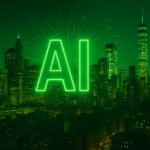The rapid development of artificial intelligence is reshaping the world’s labor landscape, stirring apprehension among economic analysts and policymakers. Emerging AI technologies possess the potential to revolutionize industries, but they also pose significant risks to the workforce, with millions of jobs at stake. As automation becomes more ingrained in everyday business practices, the global workforce faces challenges that transcend traditional economic models. Growing concerns are underscored by predictions that significant job displacement could accompany the rise of AI-driven efficiencies.
Throughout history, technological advancements have often accompanied societal shifts. Notably, the industrial revolution and the advent of automobiles redefined labor markets but also created new opportunities. These transitions offered a valuable perspective on the potential impacts of AI today. In this ongoing debate, economic and technology experts consider whether AI will mirror these historical trends by ultimately generating more jobs than it displaces. The pace and scale of AI’s integration into industries, however, might present unprecedented challenges, leading to widespread economic strain.
How Does AI Impact Current Industries?
In diverse sectors such as manufacturing and farming, the injection of AI technology is becoming more pronounced. Companies like Caterpillar have integrated AI to operate machinery remotely, minimizing the need for a physical workforce. Lee Jackson commented on AI’s presence, saying,
“There’s AI factored in big cat machines that can be run from a control room.”
This shift could lead to a workforce reduction, affecting employees not only in tech-heavy industries but also in more traditional roles.
Will Job Losses Outpace Job Creation?
Reports, such as the one from Goldman Sachs (NYSE:GS), which warns of the loss of 300 million jobs globally due to AI, add weight to these concerns. While some argue that new technology creates employment opportunities, the transition may not be seamless for all. Doug McIntyre expressed concerns about this shift, noting that
“AI could drive tremendous productivity in our economy, but it could also eat through a lot of jobs.”
The uncertainty lies in the balance between job elimination and creation within this new AI paradigm.
The economic ramifications of AI adoption cannot be overlooked. An increase in unemployment rates and a downturn in economic stability are plausible scenarios if the adoption of AI happens at a rate that outpaces job creation. Discussions around strategies for mitigating potential job losses focus on workforce adaptation and skill development, with an emphasis on retraining existing employees in AI-related fields.
Looking forward, it is crucial for stakeholders, including governments, businesses, and educational institutions, to forge robust plans that anticipate the social and economic impacts of AI. Preparing the current and future workforce with relevant skills will be vital to ease the transition and harness the positives of AI growth. The challenge remains in making these opportunities accessible to all, preventing economic inequity and ensuring that technological progress benefits the entire society.










